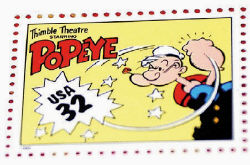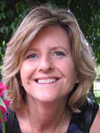First-Class Fun
Published in Bay State Parent

I Yam what I Yam
On the way to the Spellman Museum of Stamps & Postal History in Weston, I ask my 12-year-old son Joel, his friend Oren and my 7-year-old son Caleb, “Do you guys know how much a stamp costs today?”
“Five cents?” Oren offers. I shake my head. “Fifty cents?” Joel guesses. Yikes. I realize that in today’s world of email and IM, my own kids don’t even know what it costs to mail a letter, let alone the rich history of stamps and the joys of stamp collecting. Honestly? They’re mildly interested in stamps.
All that is about to change.
We arrive at the Spellman Museum of Stamps & Postal History, located on the campus of Regis College. The museum opened in 1963 and is named after Archbishop Francis Cardinal Spellman, an avid stamp collector who wanted a home for his growing collection of stamps from around the globe. Since its opening, the museum’s collection, which initially brought together the collections of Francis Cardinal Spellman and the National Philatelic Museum in Philadelphia, has grown considerably. It is one of only two stamp museums in the country: the other is the National Postal Museum in Washington, D.C. So it’s pretty cool to have this gem of a museum within short driving distance of most Massachusetts families.
The Spellman Museum’s mission is “to be a center of learning and activity that enables those of all ages to appreciate diverse cultures and peoples by exploring the ways they communicate through the world’s postal systems.” Central to the museum’s philosophy is that real objects, direct experience, and enjoyment are gateways to understanding and learning.
There are many ways they deliver on this mission. Children can engage in numerous hands-on activities, including museum-wide Stamp Scavenger Hunts, an interactive “Stamp or No Stamp?” quiz game and special crafts and activities on Family and Homeschoolers Days.
“Kids can learn so much about the world through stamps,” says Siobhan Mahaney, an educator, volunteer and museum board member. “We have U.S. stamps and international stamps. Kids can come here and take them home. It’s so much fun. Once kids get started with stamp collecting, they get addicted to it!”
Fifteen year-old Adam Zec from Medford, agrees. “I think that kids would be amazed to see how many things that are actually on stamps. It’s little bits of history on little bits of paper.”
Adam and his sister Emma, 12, aren’t the only kids who are excited about stamp collecting. The Activity Room is filled with kids from toddlers to teens, discovering new things through stamps.
“We see kids come in the door with no knowledge of stamps, and walk out with a whole new view of their world and an excitement about stamp collecting,” says Henry Lukas, the museum’s director of educational programs. Henry hosts many groups of kids who come to the museum to learn more about stamps and stamp collecting, including school groups, scout troops, and homeschoolers.
The museum encourages kids to start their own collections, and most stamps cost only two cents to purchase, definitely a price worth the treasure. Both U.S. and worldwide cancelled stamps are available in bins sorted by country or by topic. And all kids who visit the museum leave with a free packet of stamps and mini stamp album, plus tips on how to start their own stamp collection.
“Some kids sit here for hours and search through,” says Lukas. “Butterflies, pets, Olympics…if they are interested in a certain topic, we can pull out a box and they can start hunting.” My own son is excitedly hand-picking stamps with animals from other countries, eagerly starting his own themed stamp collection.
But there’s more to stamps than simply collecting them. “You can learn a lot from a corner of an envelope,” Lukas says. “They are an invention; someone had to think up an idea. They come in all different shapes. Some are made of material other than paper, like wood. There’s a Brazilian stamp that smells like coffee.”
Stamps can also be very valuable. “When the first airmail stamp was printed back in 1918, one sheet of 24-cent stamps was printed with the airplane upside-down,” says Lukas. In 2005, a single “Inverted Jenny,” as the stamp is called, was sold at an auction for a record $525,000.
We take part in the Massachusetts Scavenger Hunt, and I must admit I learned some interesting facts about our state I hadn’t known before, all through stamps. (Did you know basketball was invented here?) There are over 100 stamps that relate specifically to Massachusetts history and culture.
Lukas then brings out a Stamp Almanac that lists all stamps and the date of first issue. He finds a stamp that was first placed for sale on Oren’s birthday, November 3rd and brings out two of the stamps and gives them to the older boys. It’s a 1982, 13- cent kitten and puppy stamp, designed by Chuck Ripper, a noted wildlife artist. Very cool.
Of course, every good museum has a museum store, and the Spellman Museum is no exception. The Museum Store, which doubles as a post office, sells a variety of stamps, stamp puzzles, books, and other stamp-related goodies.
We leave the museum with lots of bits of paper, and three boys who continue their fascination with their stamps once home, glued with fascination on their tiny treasures.
Spellman Museum of Stamps & Postal History
235 Wellesley Street, Weston MA
www.spellman.org
Admission: Adults, $8; seniors/students,
$5 Members and children 16 & under are free.
Hours: Thursday – Sunday, Noon – 5 P.M.
See schedule for holiday hours.
Upcoming February Events: Homeschoolers Day, February 12th Special activities will celebrate the bicentennial of President Lincoln’s birthday. 9:30-11:30 a.m. Open to the public.
“Happy Birthday Presidents” Family Day, February 19th. Enjoy crafts, activities and a birthday cake. 11 a.m. -4 p.m.
 My professional experience includes leading the creative efforts of three companies I have co-owned. I'm a seasoned copywriter/creative director, award-winning journalist, avid runner, and mom of four. Got a story idea you'd like to share? Email me at treske@nowspeed.com. You can also find me on Twitter: @trishreske, LinkedIn and Facebook.
My professional experience includes leading the creative efforts of three companies I have co-owned. I'm a seasoned copywriter/creative director, award-winning journalist, avid runner, and mom of four. Got a story idea you'd like to share? Email me at treske@nowspeed.com. You can also find me on Twitter: @trishreske, LinkedIn and Facebook.